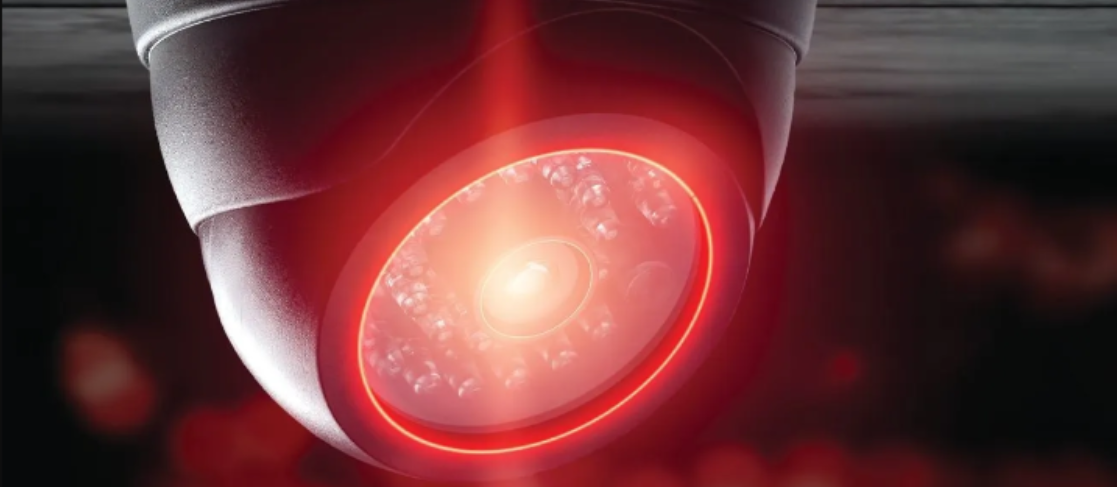Retrofitting Meant for People
How LLLC is lightening the load of legacy lighting

Fluorescent bulbs burning out manifests itself in a variety of ways: A light flickering above workstations in the office. A hum coming from the ceiling of a doctor’s office. A patch of darkness in the hallway.
That is the reality with legacy lighting.
But the opposite of burning out is finding sustainability, something that does not only apply to lighting, but also to whom it serves: people. Time, money and experiences are all finite resources, just like the energy that powers buildings.
Public utilities are struggling to find solutions that will drive customers to incorporate controls when replacing legacy lighting in commercial buildings. Even buildings in tech-forward cities are no exception. A utility company in Seattle, Washington USA has developed a unique approach to help their customers with a simple but powerful LED solution.
Seattle City Light (City Light) has helped facility managers transition to LEDs for years, but they have recently taken it even further. City Light incentivizes businesses that install Network Lighting Controls (NLC) systems for lighting controls, including Luminaire Level Lighting Controls (LLLC).
LLLC is a type of NLC system and features fixture-mounted occupancy and daylight sensors with networked capability, resulting in unparalleled flexibility, control and energy savings. Fixtures can be zoned, high-trimmed, bi-level (high wattage when occupied, lower wattage when unoccupied) and they can have different settings for business hours and non-business hours.
Control strategies built into LLLC include occupancy sensing, daylight harvesting, and continuous dimming, and they can also be integrated into existing building management systems. With more local governments adopting progressive energy codes, LLLC can help FMs meet many requirements right out of the box. They also save on installation costs (less wiring) and can eliminate maintenance trips up the ladder entirely; most LLLC can be individually addressed, zoned and modified with a smartphone app at ground level.
Another critical choice that facility decision-makers can attest to, is when it comes to lighting retrofits for large multi-space commercial buildings, relationships are not just important between operating systems, but also between the people writing the specifications, doing the implementation, and performing the maintenance – and their local utility.
Recently City Light assisted an FM team and their electrical contractor at the Associated General Contractors of Washington (AGCW)’s building, a prominent 10-story commercial building on the Lake Union marina near the boathouse featured in the 1993 film “Sleepless in Seattle.” But there was nothing about this project that kept the team up at night; with LLLC as the key part of the proposed upgrade, this project is an example of how utilities, lighting contractors and FMs can work together to bring sustainable projects to light.
Seeing is believing
When Len Kannapell walked into the AGCW’s building, he immediately noticed it was over lit.
“The AGCW building has everything from financial institutions to psychotherapy offices,” said Kannapell, an energy management analyst at City Light. “On virtually every floor office space there were far too many lights, because that’s what the design was when this building first went into operation in 1972. That’s just what fluorescent lighting was about.”
Kannapell’s department – Customer Energy Solutions - is dedicated to helping customers reduce their electricity use in lighting and HVAC, and helping FM teams that spend far too much of their time switching out bulbs. This includes AGCW’s Chief Facilities Engineer Greg Manoske, who was constantly replacing the AGCW building's 2,700 old ballasted fluorescent ceiling fixtures.
Flexible systems like LLLC can reduce the number of fixtures that still have ambiance and controls, in case of tenant changeover.
It is a value that the staff of the AGCW building shared. But for the headquarters of the Washington chapter of AGC, seeing is believing.
Eager to make a change, the AGCW team put out a request for proposals to contractors. A wireless networked lighting solution could also offer the AGCW building additional benefits, including integration with a variety of business and building systems, and improved work environments.
LLLC could provide unparalleled adaptability with energy savings at a cost-effective price point. To help offset the installation costs, Urban Energy Group’s (UEG) David Summers turned to Kannapell to find out what incentives his department could offer. But before turning to the ceilings, they opened a spreadsheet and populated each row to calculate the energy savings and incentive of the lighting upgrade. UEG surveyed each area in the building and added operating hours and fixture totals.
They found that LLLC could save AGCW nearly US$40,000 in annual energy costs—totaling to 479,931 kWh in annual savings. City Light could offer a US$127,269 incentive based on the energy savings, paying for a significant amount of the total project cost. City Light drafted a contract.
For Summers, the financials were just one part of seeing LLLC as the solution. For a truly eye-opening experience, staff at the AGCW building needed to see a demonstration of what LLLC could do.
A grand slam solution
As part of his bid for a contract, Summers worked with AGCW’s Manoske on a before-and-after presentation of a conference room.
The room transformed from 18 two-lamp T8 troffers with no controls to six 2x4 LLLC fixtures with high-end trim, a capability that allows the installer to set the luminaire output to achieve current recommended light levels. The building engineer, as well as some decision makers, saw the dramatic improvement firsthand.
It was during the demonstration that Summers told AGCW’s leadership that a City Light incentive could secure them a US$50 per fixture LLLC bonus, which was a significant part of the incentive. He also explained how LLLC future-proofs their investment.
“ACGW could have just retrofitted their fixtures to LED, but it would lack the flexibility that they were looking for. A traditional networked lighting controls redesign would have been expensive and didn’t fit their needs. We recommended upgrading to LLLC to gain a system with maximum energy savings and future flexibility,” Summers said. “Software upgrades mean AGCW can change the configuration of the lights without even going up a ladder. Knowing they would continue to have tenants changing over and knowing those changes would require floor and lighting reconfigurations, the futureproofing and the cost made LLLC a grand slam.”
The pre-configured kits had a small learning curve during installation but were fairly easy to streamline. UEG retrofitted the entire building, which included 100 different office spaces.
The plan reduced AGCW’s total number of fixtures by 43 percent, it was not the only place they saved energy. The LLLC system tapped into its daylight harvesting abilities—when sensors detect enough natural light, they automatically reduce the luminaires’ light output— capitalizing on the AGCW’s building’s large number of floor-to-ceiling glass windows. This individual sensor-level feature is another reason LLLC can save up to 75 percent in energy usage compared to standard LED fixtures.
“LLLC’s ability to automatically dim down or turn off is key to energy savings,” said Summers. “Each LLLC fixture can individually control and adapt its own light level based on the environment, which makes the fixtures, by nature, optimized.”
With great flexibility comes lessons learned
The LLLC system installed at the AGCW building was designed with the flexibility to be re-programmed to adapt to tenant occupancy much easier and more cost-effectively than a traditional lighting redesign. The programmable and addressable nature of LLLC means zones, light levels, and behavior settings can be optimized no matter the tenant or business needs. This system flexibility means the space is easily reconfigured to meet tenant improvement needs without costly rewiring.
When choosing (or specifying) an LLLC system, it is essential to understand FM staff’s bandwidth for continually customizing the lighting at tenant request. Because it is common for a building to have a small operations team, specifiers should identify if the customer has internal resources available to customize the system, or if outside support will be needed.
For Manoske, that is the one thing he would change about his implementation of the system: “I recommend operators really understand the program interface and be realistic about the team’s bandwidth before allowing individual tenant control. I’m a one-man show at AGCW, and prioritizing tenant requests for lighting customization can be overwhelming at times. That said, for this facility, optimizing energy efficiency, daylight harvesting, and space changeovers makes our LLLC system an ideal fit.”
It was a learning moment for Summers as well. “This particular LLLC installation illustrated the importance of specifying not only the right light, but also getting to know the team who will be operating the system once things are in place,” said Summer. “To ensure a great lighting experience for both the user and the tenant, you need to balance current and future tenants needs with how the system will be managed.”
Rewarding the “right light”
In 2022, the AGCW building partnered with Seattle City Light to enter the U.S. Department of Energy’s Integrated Lighting Campaign. The award recognizes a select number of participants for exemplary performance in their application of advanced sensors and controls in lighting and the integration of lighting with other building and business systems and the AGCW project won. It was recognized at the 2022 Illuminating Engineering Society Annual Conference for replacing legacy lighting with LED lighting with LLLC.
The LLLC project at the AGCW building serves as a blueprint of the modern office lighting retrofit project. It illustrates how partnerships between business and utilities can create environmentally sustainable outcomes, while also improving building bottom lines. And most importantly, that futureproofing building systems and choosing the right fixture for building occupants can also be the right choice for any facility.

Angela Pilant has more than 25 years of experience working within the lighting and energy industries. She has a diverse background as a utility specialist, manufacturer’s representative, and consultant, working side by side with customers to upgrade their facilities with energy-efficient technology. She has worked at Evergreen Consulting Group since 2009 and specializes in market and trend analysis, utility program development, client engagement strategies, and training. She is a certified instructor for the Building Operator Certification Program (BOC) and has developed and conducted cross-industry curriculum, including sales training, throughout the country. She has earned a Lighting Certified Professional designation from the National Council on Qualifications for the Lighting Professions (NCQLP).
Read more on Operations & Maintenance , Project Management and Sustainability
Explore All FMJ Topics









